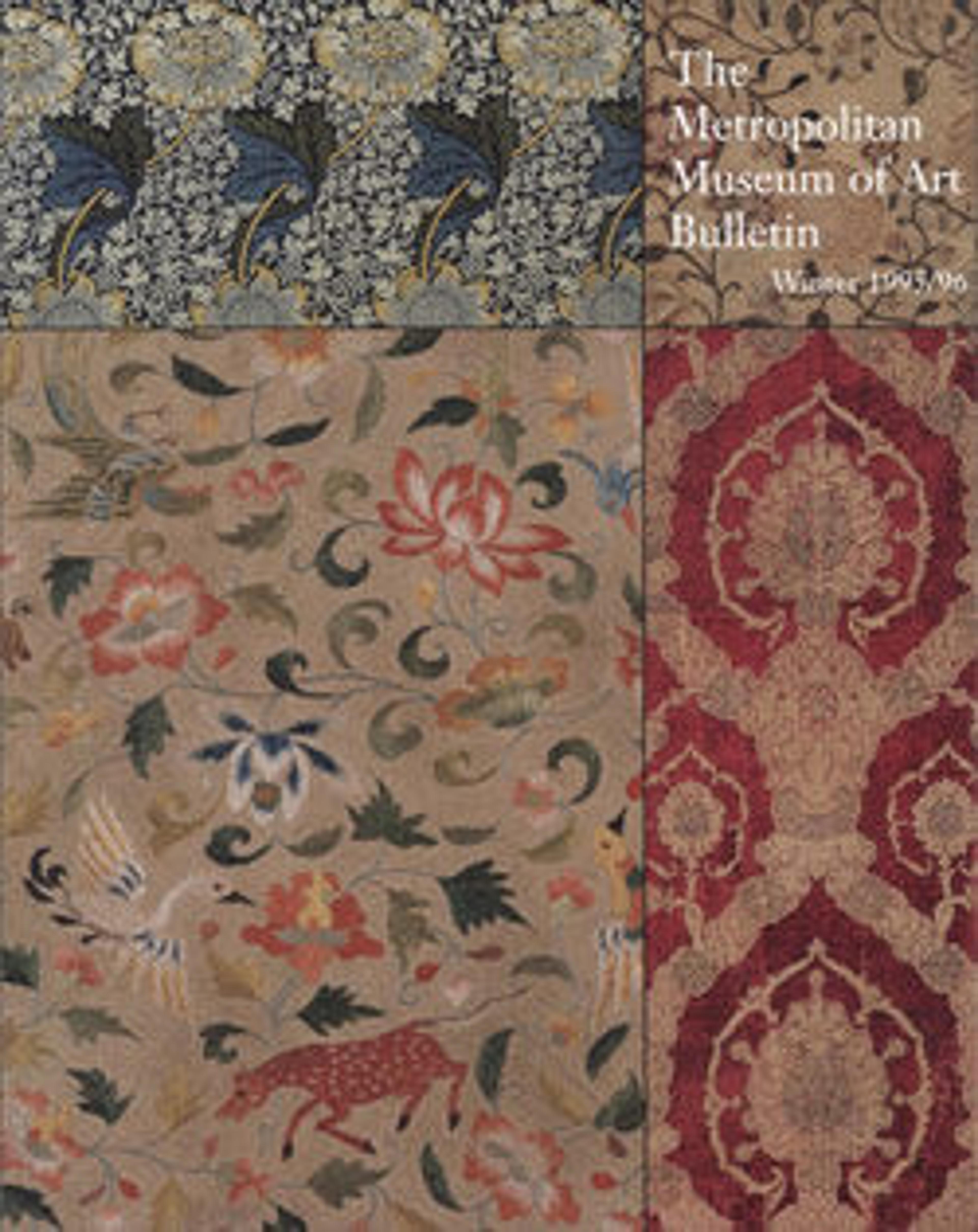Courtiers in a Rose Garden: A Lady and Two Gentlemen
This work belongs to a series of tapestries designed to cover the walls of an entire room. Such sets were often referred to in medieval inventories as "rooms" ("chambres"). It is possible that this set was made for the French king Charles VII, whose colors were white, red, and green and one of whose emblems was the rose tree. A royal connection is certainly likely, for the tapestries are sumptuous, with metal threads not only in the clothing and jewelry worn by the fashionable courtiers and ladies, but also in the background leaves, buds, and open roses. Working from full-scale painted designs, the weavers produced tapestries like this by forcing the cross threads (weft) tightly into place—each different-colored thread separately—until all the undyed lengthwise threads (warp) were concealed. Even with several weavers working side by side—the usual procedure—and with the tapestries of a single set being worked simultaneously on separate looms, their production would have taken several years. Hung on the walls of a castle or manor house, tapestries not only served the practical function of insulation, preventing dampness from entering the room, but also constituted a visible and portable declaration of their owner's wealth and taste.
Artwork Details
- Title: Courtiers in a Rose Garden: A Lady and Two Gentlemen
- Date: ca. 1440–50
- Culture: South Netherlandish
- Medium: Wool warp; wool, silk, metallic weft yarns
- Dimensions: Overall: 9 ft. 5 3/4 in. x 10 ft. 8 in. (288.9 x 325.1 cm)
- Classification: Textiles-Tapestries
- Credit Line: Rogers Fund, 1909
- Object Number: 09.137.2
- Curatorial Department: Medieval Art and The Cloisters
Audio
2208. Courtiers in a Rose Garden: A Lady and Two Gentlemen
0:00
0:00
We're sorry, the transcript for this audio track is not available at this time. Please email info@metmuseum.org to request a transcript for this track.
More Artwork
Research Resources
The Met provides unparalleled resources for research and welcomes an international community of students and scholars. The Met's Open Access API is where creators and researchers can connect to the The Met collection. Open Access data and public domain images are available for unrestricted commercial and noncommercial use without permission or fee.
To request images under copyright and other restrictions, please use this Image Request form.
Feedback
We continue to research and examine historical and cultural context for objects in The Met collection. If you have comments or questions about this object record, please complete and submit this form. The Museum looks forward to receiving your comments.
